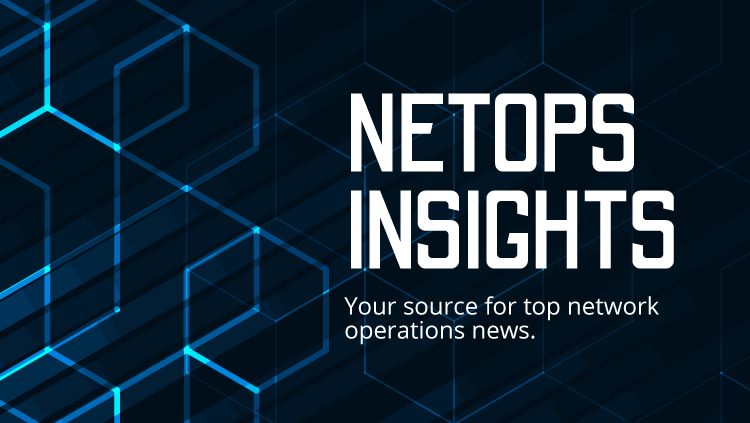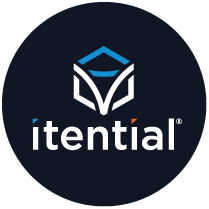The State of Network Automation, Underused SD-WAN Features & Multi-Cloud for Developers

Week of February 2nd, 2020
The Current State of Network Automation Initiatives, Goals, Use Cases & Source of Truth
Network automation has continued to evolve over the past few years. It used to be about writing fragile, one-off scripts that could eliminate simple, manual tasks. But that mentality won’t cut it anymore as other technology disciplines continue to surpass the network, impeding a holistic automation strategy. Network teams are left to find a way to keep pace with innovations across this new multi-domain landscape. Today, enterprises are pushing the envelope by using advanced analytics, off-the-shelf and internally developed software, and other techniques to automate both simple and complex network management processes.
Top Ten Underused SD-WAN Features
Early SD-WAN products provided enterprises with a way to decommission expensive, inflexible MPLS links, connect branch offices directly to the cloud and optimize WAN traffic. But many of the initial SD-WAN offerings lacked features such as integrated firewalls, application-aware routing, and advanced data analytics. Over time, SD-WAN vendors have beefed up their products to encompass a robust set of additional features. However, many enterprises are not taking advantage of the full capabilities of the latest SD-WAN products and managed service options.
Multi-Cloud Adoption To Better Enable The Developer Workforce
Over the past decade, we started to see a broader shift toward the use of multiple cloud providers by the enterprise. The need to reduce risk, optimize cloud usage, manage costs and the push to open source and cloud vendor-agnostic technologies are providing more options for developers, which will likely lead to an even steeper increase in multi-cloud usage. In 2019, we saw the acquisition of Red Hat by IBM, the largest software company acquisition in IT history, to support both cloud and open source software. This acquisition, and others such as Salesforce/Tableau and Google/Looker, suggest that the trend will continue moving forward. In addition to support from mergers and acquisitions, multi-cloud within companies and use by developers will continue to rise.
Ten Predictions For A New Decade
As we begin a new decade, it’s useful to spend a moment reflecting on how far we’ve come over the past decade and look ahead to see what’s on the horizon. In technology, this is an especially important exercise, as the advancing rate of change in capabilities is dizzying — which in turn lends itself to marketers creating a very distorted view of the upcoming world.
SD-WAN Poses A Challenge To Providers Of Managed Business Services
Changing traffic patterns driven by infrastructure-as-a-service (IaaS) and software-as-a-service (SaaS) usage, the growth of IoT and new security threats are rapidly changing the WAN requirements in distributed organizations. Many of these organizations continue to rely on managed service providers (MSPs) to deliver reliable, secure WAN connectivity—with annual expenditures exceeding $40 billion worldwide. With its intelligent traffic steering, SD-WAN technology has enabled new hybrid WAN services that can incorporate a mix of MPLS, internet and wireless circuits. SD-WAN enables both the enterprise do-it-yourself (DIY) model and the managed service model with a wide range of technology options.
Nokia Claims NetOps First
Nokia today introduced a new suite of cloud-native software designed to automate mobile network operations in a 5G environment. Nokia Network Operations Master aims to alleviate technical complexities for operators with a series of new tools for troubleshooting, administration, software management, and configuration management.
Three Ways DevOps Will Be Used To Overcome The Biggest Challenges
According to PwC, 63 percent of executives said that a lack of skilled teams was the biggest obstacle to technical innovation — and this challenge is a bigger existential threat to startups than access to capital. But there’s a salve for companies that are facing this challenge. DevOps, which automates processes in software development and IT, fills some of the holes left by the lack of tech talent. When used effectively, it quickly solves the three main challenges that organizations face when looking to scale and grow efficiently, while allowing them to focus on the new features and products customers will love.
How Will AIoT Bring 5G Into The Mainstream?
5G will usher in a new era of connectivity, kickstarting the beginning of a technology revolution during which high-speed connectivity will become the new norm. It will transform the way we work, play and innovate. That being said, 5G will also introduce newfound complexities for network and service operators. With 5G comes 8K video streaming, machine communications and vast quantities of new programs and applications – while this promises high-quality audio and video, it also brings in challenges for network and service providers. Operators will be inundated with data, which will all need to be analyzed, interpreted and acted upon.
A Vision For 2020 – Transformative Telecom Trends To Expect In The Coming Year
2019 has come and gone, probably faster than many of us expected, and now, we must look ahead to what the next year can offer the telecommunications service provider and technology supplier communities. Given advancements in microchips and a desire to move away from risky manual processes, it should come as no surprise that upcoming digital transformation initiatives will have a core focus on automation, intelligence and computing power. What 2020 will look like is certainly up for interpretation, so let’s take a look at a few key trends that should become more widespread over the next 12 months.
Decisions At The Speed Of Light: How AIoT Will Allow 5G To Take Flight
As 5G begins to rear its head, the whisperings of a tech revolution are growing louder. Catalyzed by nationwide access to high-speed connectivity, the adoption of technology across the country is set to hasten, transforming how we work, play and innovate. Before this, network operators and service providers must overcome the unparalleled complexities of 5G. In addition to high-quality sound and picture quality, the implementation of 5G networks will unlock 8K video streaming, machine communications and further inaugurations. These networks will demand that operators respond rapidly, digesting the masses of data thrown their way and acting accordingly to satisfy consumer demands with one-to-one services.
Creating A DevOps Culture
There are three ways to create a DevOps culture: by default, by design or iteratively. The three are not necessarily mutually exclusive because DevOps tends to be a learning experience that takes considerable time.
